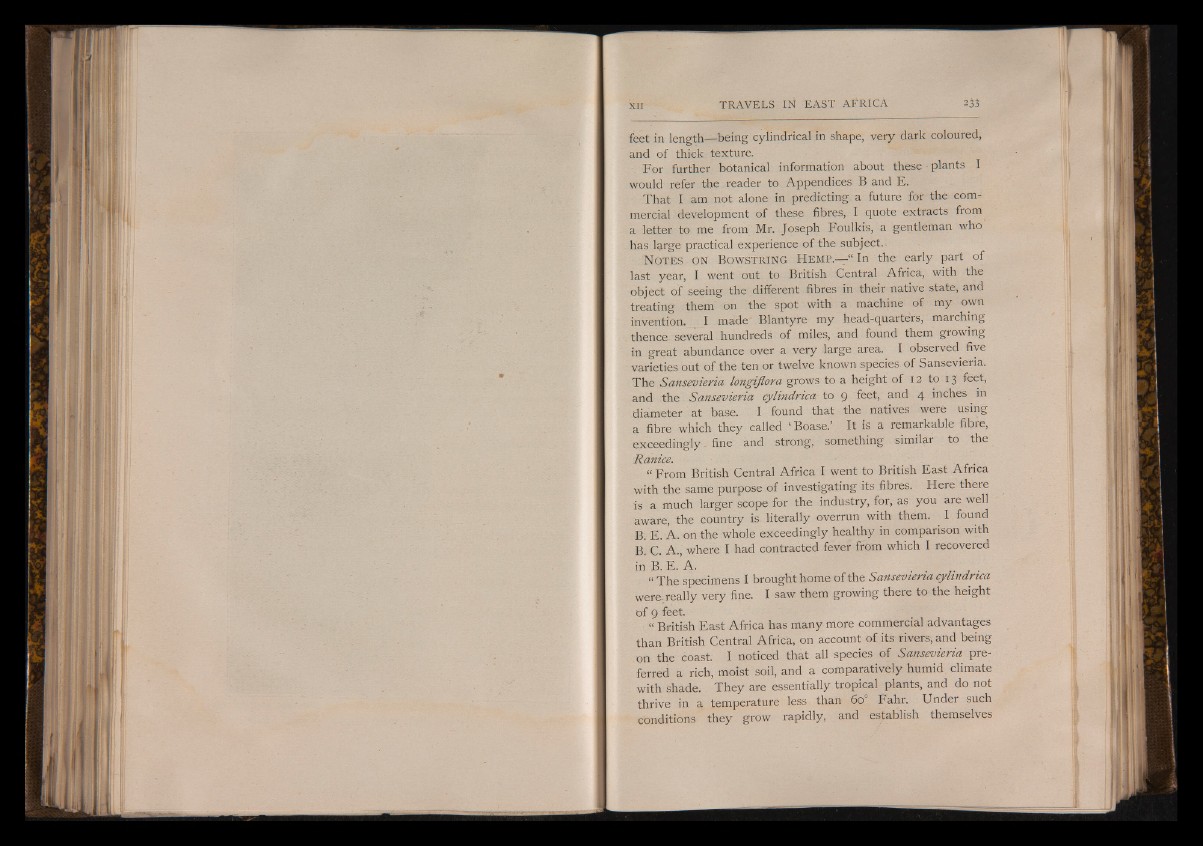
XII TRAVELS IN EAST AFRICA 233
feet in length— being cylindrical in shape, very dark coloured,
and of thick texture.
For further botanical information about these plants I
would refer the reader to Appendices B and E.
That I am not alone in predicting a future for the commercial
development of these fibres, I quote extracts from
a letter to me from Mr. Joseph Foulkis, a gentleman who
has large practical experience of the subject.
N o t és on Bow st r in g H e m p—“ In the early part of
last year, I went out to British Central Africa, with the
object of seeing the different fibres in their native state, and
treating them on the spot with a machine of my own
invention. I made Blantyre my head-quartérs, marching
thence several hundreds of miles, and found them growing
in great abundance over a very large area. I observed five
varieties out of the ten or twelve known species of Sansevieria.
The Sansevieria longiflora grows to a height of 12 to 13 feet,
and the Sansevieria cylindrica to 9 feet, and 4 inches in
diameter at base. I found that the natives were using
a fibre which they called ‘ Boase.’ It is a remarkable fibre,
exceedingly - fine and strong, something similar to the
Ranice. _ .
“ From British Central Africa I went to British East Africa
with the same purpose of investigating its fibres. Here there
is a much larger scope for the industry, for, as you are well
aware, the country is literally overrun with them. « I found
B. E. A. on the whole exceedingly healthy in comparison with
B. C. A., where I had contracted fever from which I recovered
in B. E. A.
1 The specimens I brought home of the Sansevieria cylindrica
were, really very fine. I saw them growing there to the height
of 9 feet.
“ British East Africa has many more commercial advantages
than British Central Africa, on account of its rivers, and being
on the coast. I noticed that all species of Sansevieria preferred
a rich, moist soil, and a comparatively humid climate
with shade. They are essentially tropical plants, and do not
thrive in a temperature less than 60 Fahr. Under such
conditions they grow rapidly, and establish themselves